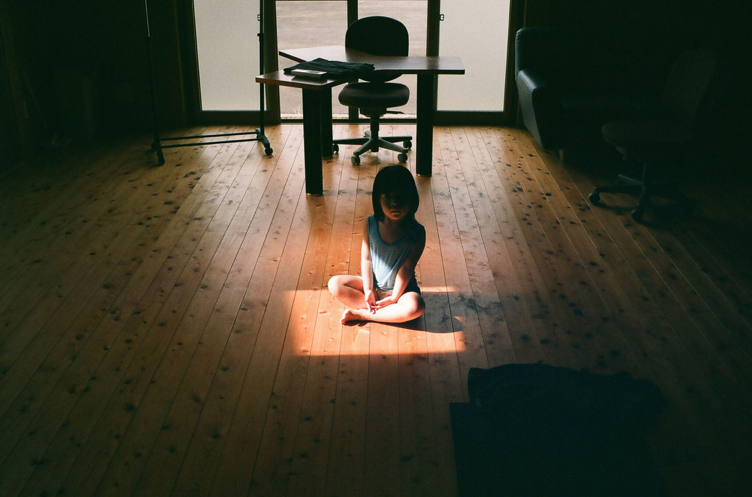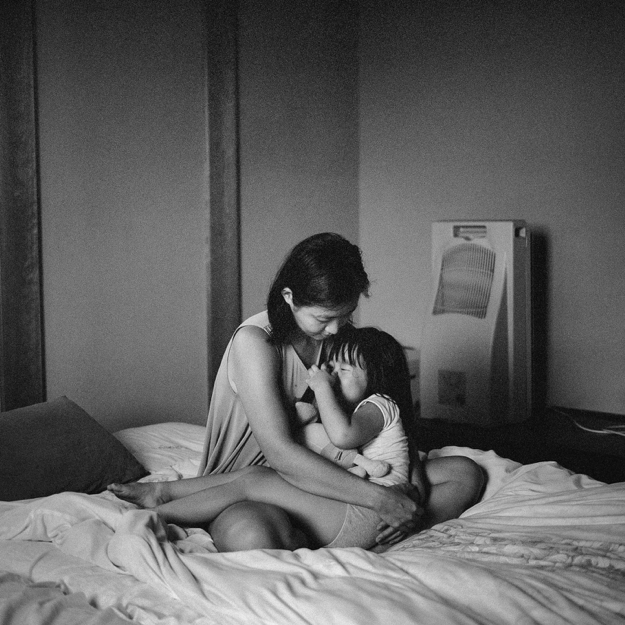You may have seen people sharing this video on Instagram.
[embedhttp://www.instagram.com/p/BxTbzlpHEJ7/[/embed]
The video is part of the #LendYourInstagram campaign by Singapore Hospice Council that aims to raise awareness of hospice care and debunk negative perceptions regarding hospices.
Other photos from the campaign depict the activities hospice patients and caregivers engage in daily.
[embedhttp://www.instagram.com/p/BxAK0cMnNaM/[/embed]
[embed
/embed]
[embed
/embed]
Photos taken by photographer who was told he had “five to 10 years to live”
The photos were taken by Larry Toh, a photographer who lives with an extremely rare form of cancer called adenoid cystic carcinoma.
According to Larry, three out of a million people have this cancer.
He was first diagnosed with the cancer, in the nose, back in 2012. Although it was a rare cancer, he received medical treatment and was able to recover from it.
But in 2016, Larry had a relapse. His doctor told him that the cancer had spread to his lungs as well.
According to known statistics, patients with adenoid cystic carcinoma in the lungs would have only five to 10 years to live.
Because of the rarity of the cancer, his doctors were unable to recommend any further treatment.
“At the beginning I was afraid. Afraid of the end of life.”
The relapse changed Larry’s life completely.
“The first process is grief. You must acknowledge the grief. Eventually, you will move out of it.
At the beginning I was afraid. Afraid of leaving my family. Afraid of the end of life. Suffering. But eventually you accept death as part of life.“
Before, photography had been a mere hobby -- he worked as a station manager with Singapore Airlines.
After accepting cancer as part of his life, Larry, with encouragement from his wife, decided to pursue photography full-time. In early 2018, he started his own business, Larry Toh Photography, specialising in family photography.



Place of dignity and peace
For Larry, working on this campaign was enlightening in many ways. He was inspired by the will of hospice patients to live their lives without self-pity, and the caregivers’ ability to provide positivity even in the face of death.
On one photoshoot occasion, Larry worked with a hospice patient who did Chinese calligraphy every day.
Having done it as a child, he was reintroduced to it when he entered the hospice for pancreatic cancer.
“If someone tells you you have two weeks to live, how would you even find the strength or motivation to do something? I put myself in his shoes and don’t know if I will be able to do something. I thought he was inspirational. He could have wallowed in self pity.”
Another memorable occasion was when Larry realised the importance of the photos he was taking.
“Halfway throughout the shoot, I realised that the people I was photographing may not be around when the photos are published. It made me feel sad, but it also made me realise how special and important these photos will be.
The hospice caregivers are really caring towards patients’ emotional and mental needs. They do their best to create activities for patients. For patients and caregivers to find joy in these activities requires so much forward thinking and positivity, because everyone knows they are dying. It really made an impression on me.”
[embedhttp://www.instagram.com/p/BxKIAWlHbXA/[/embed]
Some patients whom Larry photographed have since passed on.
Given him hope
Despite his circumstances, Larry wants to keep a positive attitude and hopes to outlive the timeline given by doctors.
“The most important thing I learnt [on his journey] is to live in the moment. I really can’t think or plan for the future because I don’t know. So I should focus on the present, because the present is the only moment that matters right now.
I hope I can beat this cancer, but it might be very painful in the end. In the end, will I be able to be cheerful? After seeing these patients, they have given me some hope. They are jovial, always joking around, cute. They have such positive attitudes.
My mindset of the last days has changed. Death is part of life. Everyone will go at one point. The end of life can still be positive.
My blessing is that I have been given a timeline.”
Contemplating the end of life
Perhaps as part of accepting his reality, Larry shared that he has thought about how the end would come.
“I would prefer to be at home and receive hospice care home visits. Towards the very end, if it gets too difficult, I would be open to moving to into a hospice. It depends on my family and the situation then.
Sometimes I think about how hard it will be. I am Malaysian and a Singapore PR; where will my funeral be? Will it be Christian or Buddhist? I thought of just cremating. Perhaps my wife can throw it into the sea, from different parts of the world.
My wife and I went through the same journey of grieving and acceptance. We are happy as we are right now. Once in a while we think about it and worry, but in general, we are happy as a family.”
________
Find out more about #LendYourInstagram here.
Larry and his wife are both freelancers while his 4-year-old is homeschooled -- which allows them plenty to time to spend together. They also have another child on the way.
All photos from Larry Toh.
This sponsored post by Singapore Hospice Council was an enlightening experience for the writer.
If you like what you read, follow us on Facebook, Instagram, Twitter and Telegram to get the latest updates.
